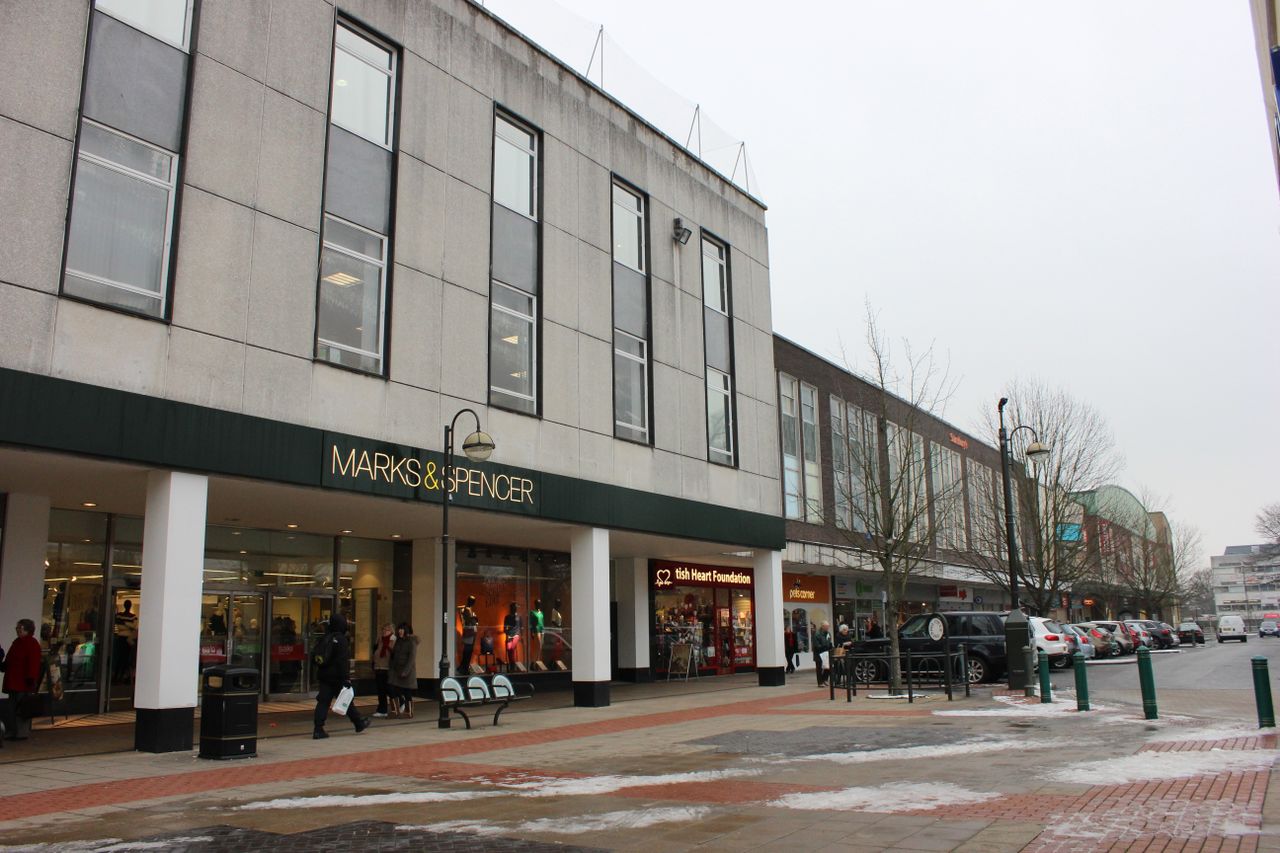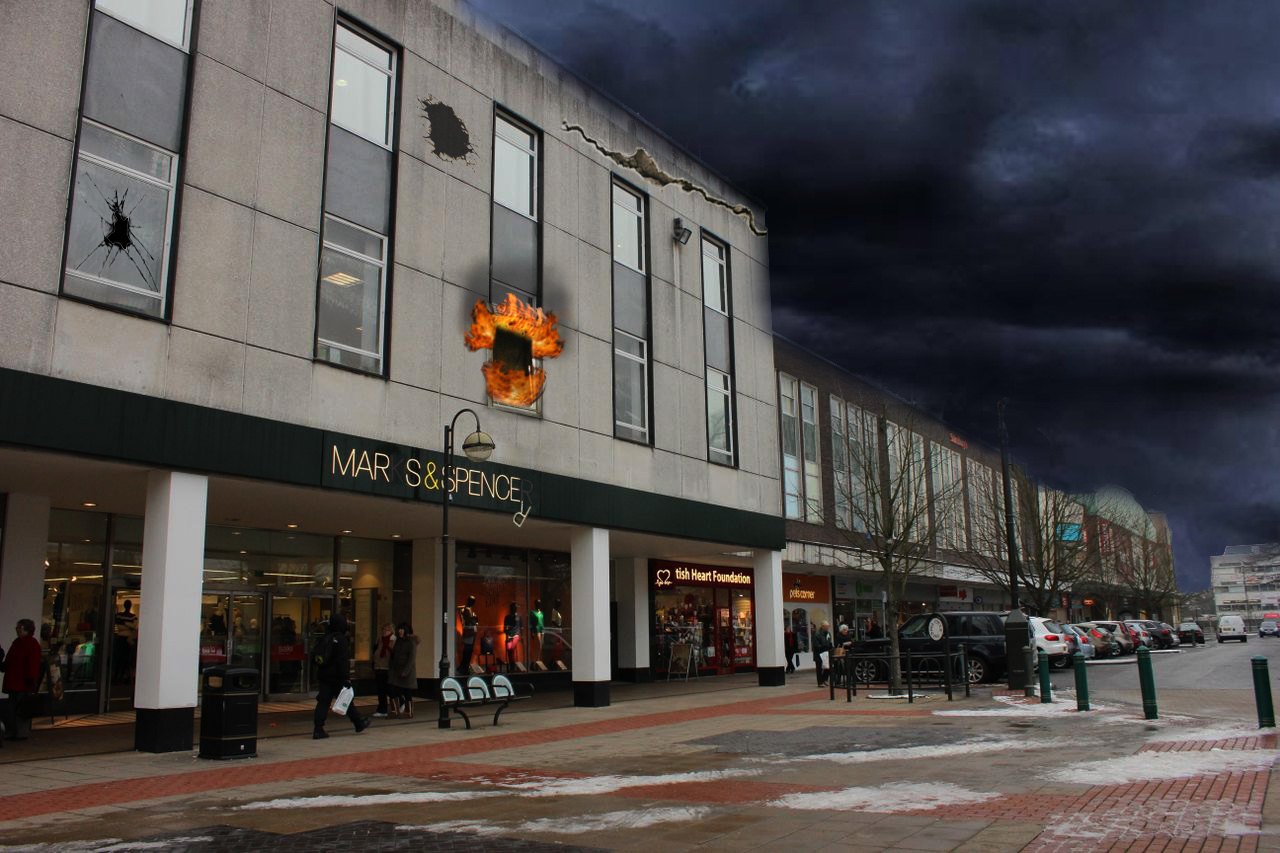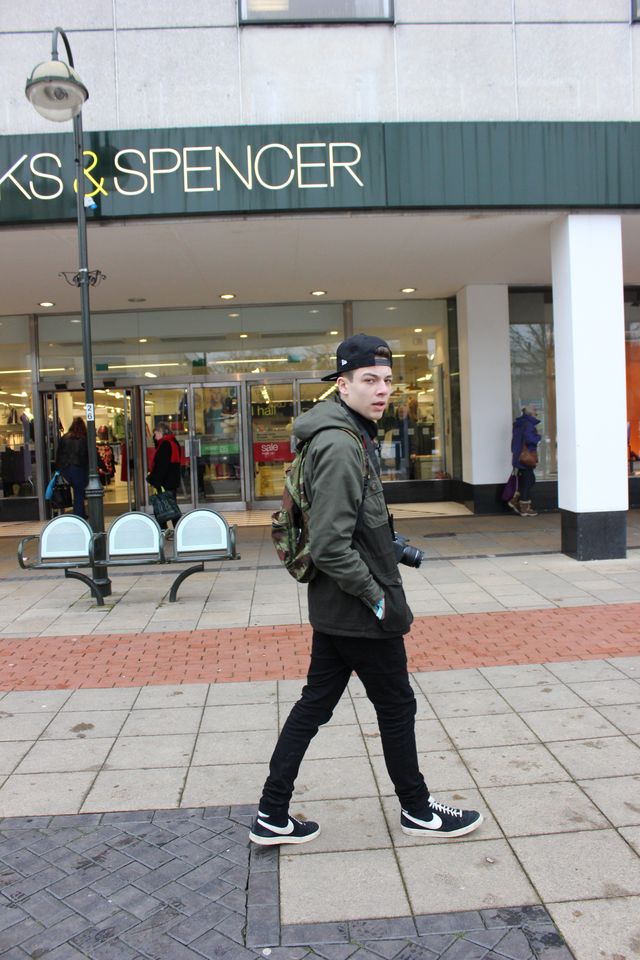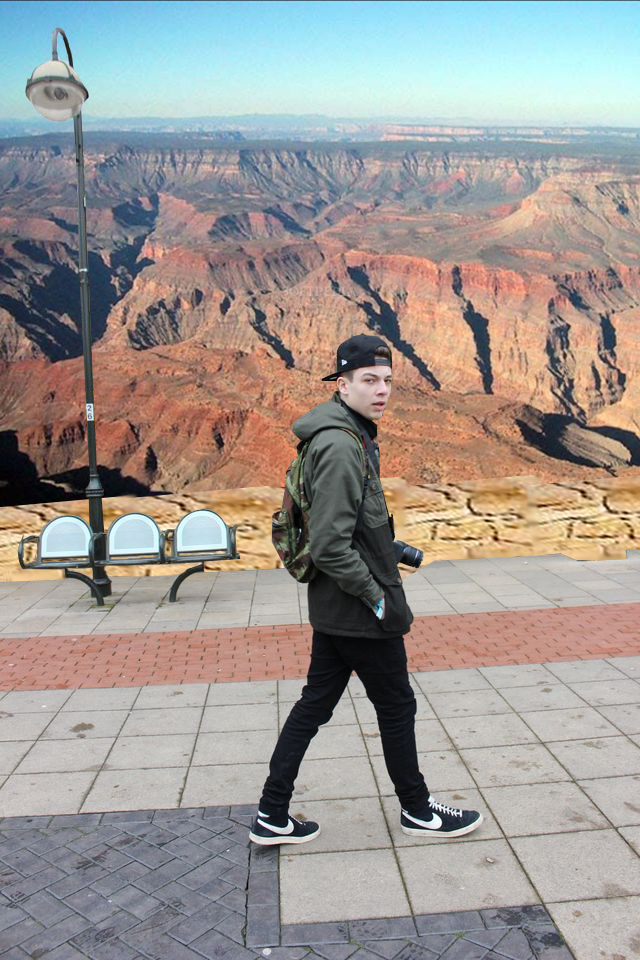TommyBphotol3csc
Wednesday, June 12, 2013
Tuesday, May 21, 2013
Photo's
Wednesday, April 24, 2013
Tuesday, April 23, 2013
Thursday, February 14, 2013
Photoshop Edits. A Twist Of Crawley

This is a photo of Marks & Spencers that I took with a Cannon 600D.

This is the same photo but after I had edited it, it took around 2-3 hours. I used lots of different tools that Photoshop CS6 provided. This is my favorite edit that I produced. I think if I made more of these I'd be able to improve my skills a lot.

This is a photo of Liam Hillier that I captured while we were walking through Crawley.

This is it after I edited it, it took around 30 minutes to do as there was a lot less work to be done on it.

I took this photo of Crawley with the same camera. I like this photo because it shows the structure of the road well.
This is what it looked like after I had edited it. This was the first photo I edited and I don't think it's the best as I didn't know as much about the programme as I did when I did the mark&spencers photo.
Tuesday, February 5, 2013
The role of the writer
What changes had to be made from the original book to the screen play?
Female Characters
The writers had to make the roles on the females bigger and more important in the film. They did this because there were to many males compared to females and it would have been an unfair balance.
taking out certain characters in the film
Writing an exposition (what has happened before the film starts) scene for the beginning of the film
Female Characters
The writers had to make the roles on the females bigger and more important in the film. They did this because there were to many males compared to females and it would have been an unfair balance.
taking out certain characters in the film
Writing an exposition (what has happened before the film starts) scene for the beginning of the film
Wednesday, November 21, 2012
Photoshop
CTRL/CMD + C = Copy
CTRL/CMD + J = New layer
CTRL/CMD + T = Scale
CTRL/CMD + V = Paste
CTRL/CMD + Q = Lasso Tool
R = Blur, Smudge, Sharpen Tool
Wednesday, October 17, 2012
Fashion Photography
There is a huge difference in fashion photography and portraiture photography. In fashion photography the photo is about what the subject is wearing, it is a commercial photo and needs to sell the clothes. The photo below was taken by Steven Meisel for the September 2007 edition for Vogue, although it is an amazing photograph it doesn't show enough about fashion and Anna Wintour, the editor, decided that the clothes wouldn't sell so it never made it into Vogue magazine.
Wednesday, October 3, 2012
Portraiture
Portraiture
Before cameras were used to take portraits, people would have their
pictures painted. Usually it was wealthy men and women or members of
royalty that had their portraits painted. They would always want to set an
example and to be painted how they want people to see them. Meaning they
had control of what the artist was painting. Where as when your portrait
is taken with a camera, it is done within the click of a button,
which shows the subjects emotion and I think has a lot more depth.
Diane Arbus is a photographer that takes photos and portraits showing
different emotions to what the subject would normally want to be portrayed. She
would often take photos when people were of guard making her photos very
powerful. However this doesn’t always fit in with what you would you want out
the photo for the specific event.
Diane Arbus was asked by the () family to take photo’s of them throughout their Christmas holiday. Most photographers would take this as a chance to show the family laughing, opening presents, eating big meals. But Diane Arbus had a different approach, as shown in the photo below. I think this is a brilliant photo because instead of having the girl laughing, smilling or doing anything that you would normally expect at christmas time, she is staring right into your eyes and showing that she is almost sad or needs to scream.
The way I think this photo was captured was by waiting for her to stop posing, putting her gaurd down and allowing all what she wanted people to see of herself to simply disappear. In my opinion this photo has a deeper meaning, than one where the girl would be posing. Because when you look into her eyes you can start imagine a lot of things that she is feeling or thinking.
The way I think this photo was captured was by waiting for her to stop posing, putting her gaurd down and allowing all what she wanted people to see of herself to simply disappear. In my opinion this photo has a deeper meaning, than one where the girl would be posing. Because when you look into her eyes you can start imagine a lot of things that she is feeling or thinking.
Wednesday, September 26, 2012
Eddie Adams:
Eddie Adams was a photographer in the Vietnan war in the late 1960's. The the photo below captured a general shooting a prisoner in the head with his hand gun, the photo was taken just as the bullet entered the prisoners head, it shows the emotion left on his face and unlike the video, lets people really analyse what's happening. I think it's this photo defines Bresson's theory on capturing the divisive moment, because is this was taken just moments before or after, it wouldn't have the same effect.
Tony Vaccaro:
Tony Vaccaro was sent to war a solider with a camera to take photos instead of being hired to be a photographer in the war like Robert Capa. I think the difference between Vaccaro's and Capa's photo's was that Tony Vaccaro would show injured soldiers in a lot more detail were as Robert Capa would show more of the landscape of war and what is happening.
Heri Cartier Bresson:
The photo below was taken with a Leica 35mm camera in Paris, by Cartier Bresson in the year 1932. This photograph I think defines Bresson's idea of capturing the decisive moment, because without the man jumping across the puddle this would just be an average photo, but as he has captured him in mid-air, known to be the decisive moment, which makes this photo so unique. Bresson was to be said the master of Candid photography, because his subjects in his most famous photo's would have no idea that he was taking a photo of them.

Eddie Adams was a photographer in the Vietnan war in the late 1960's. The the photo below captured a general shooting a prisoner in the head with his hand gun, the photo was taken just as the bullet entered the prisoners head, it shows the emotion left on his face and unlike the video, lets people really analyse what's happening. I think it's this photo defines Bresson's theory on capturing the divisive moment, because is this was taken just moments before or after, it wouldn't have the same effect.
Tony Vaccaro:
Tony Vaccaro was sent to war a solider with a camera to take photos instead of being hired to be a photographer in the war like Robert Capa. I think the difference between Vaccaro's and Capa's photo's was that Tony Vaccaro would show injured soldiers in a lot more detail were as Robert Capa would show more of the landscape of war and what is happening.
Heri Cartier Bresson:
The photo below was taken with a Leica 35mm camera in Paris, by Cartier Bresson in the year 1932. This photograph I think defines Bresson's idea of capturing the decisive moment, because without the man jumping across the puddle this would just be an average photo, but as he has captured him in mid-air, known to be the decisive moment, which makes this photo so unique. Bresson was to be said the master of Candid photography, because his subjects in his most famous photo's would have no idea that he was taking a photo of them.

Monday, September 24, 2012
Wednesday, September 12, 2012
Subscribe to:
Comments (Atom)

























